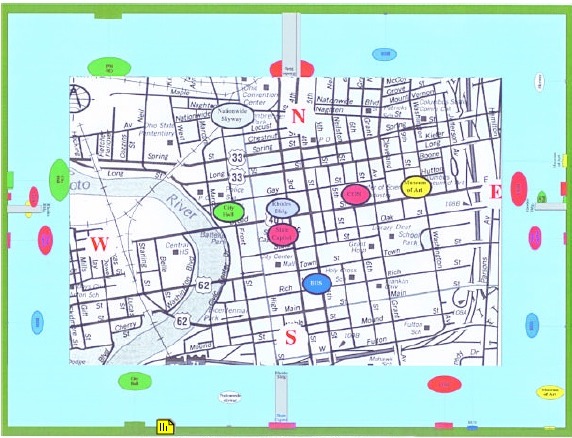Augmented Reality
/As mobile platforms come to dominate the market for on-line games, and the lowest common denominator of low-investment entertainment gains an even greater market share, there will be an under-served niche of gamers who want to engage more deeply and meaningfully with a blended reality. Similarly, an emerging market for augmented reality is likely to include consumers and "prosumers" who are interested in social on-line games.
The pictures below, from 1996, show a mockup (setting in Columbus Ohio) of a notional mobile device to augment reality and enhance mobility and navigation for individuals with various sensory, cognitive, and developmental disabilities. The device was notional at that time because electronic compasses and tilt sensors had not yet been incorporated into GPS-based hand-held navigational aids. Most mobile devices today contain the necessary hardware for blended or augmented reality.
Pictures show maps and through-the-lens views of Columbus Ohio from the West with notional hand-help device superimposed (conceived and disclosed 1996). Device shows landmarks in appropriate locations (direction and perspective). Device allows user to see through buildings or other clutter to key destinations and way points. Device updates across scanning motion provides user with an unlimited dynamic field of view even though instantaneous field of view is limited.




